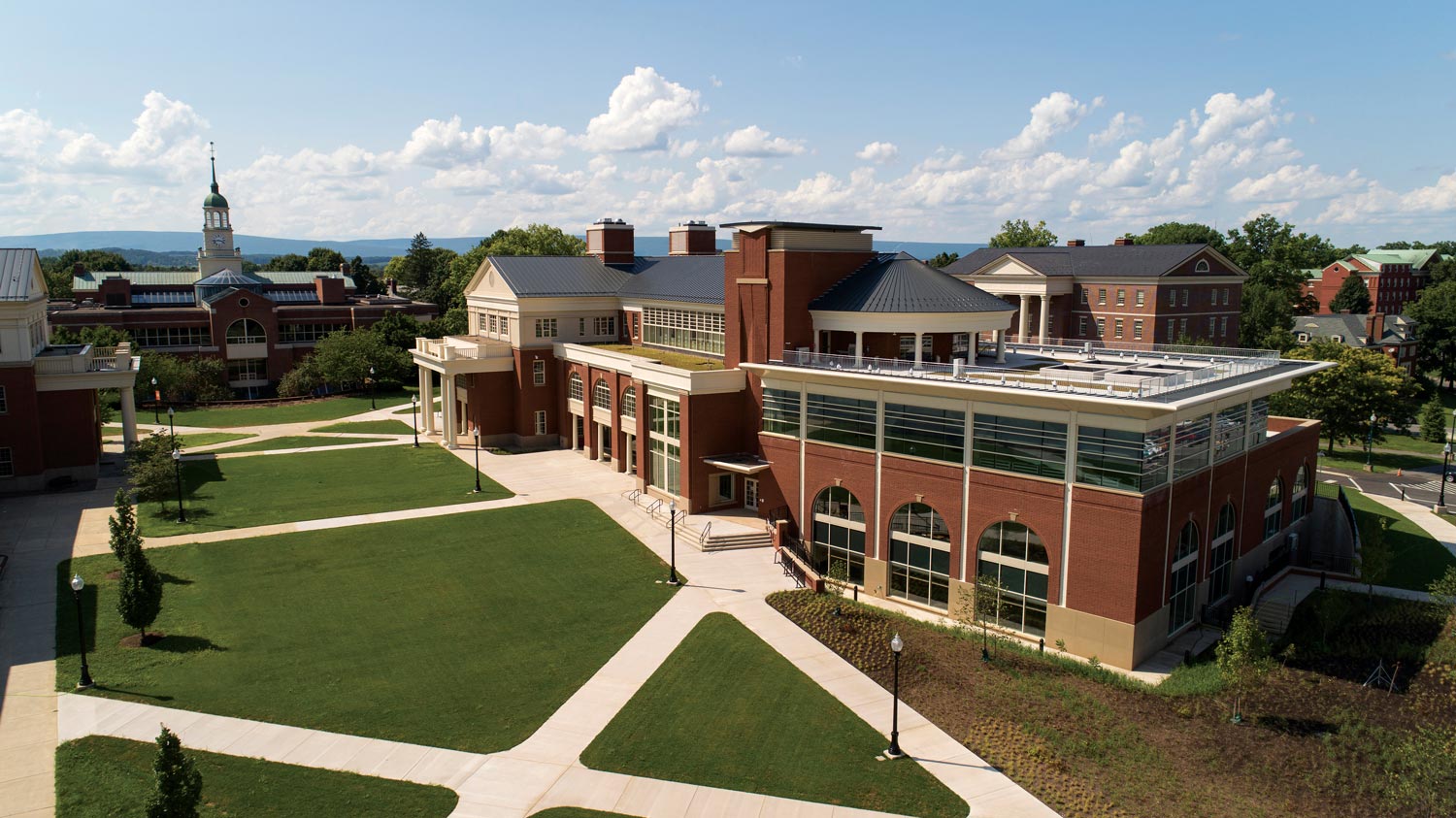
Academic East opened in August. Funded by a combination of University resources and private support, it is a center for high-tech innovation with 25 labs and research equipment found at few other colleges or universities. What also sets the building apart is that undergraduate students get to use it all, starting their very first year on campus.
“We’re proud to be an institution that values expanding the worldview of our students as much as we do and shaping the world through groundbreaking research,” says President John Bravman. “With Academic East, we intend to do both.”
Standing behind Bertrand Library, the 78,000-square-foot facility nearly doubles the lab space available for the College of Engineering and provides offices, labs, classrooms and research spaces for the Department of Education.
Around most corners are opportunities for exploration that are rare among undergraduate-focused institutions, including a cell-culture lab for growing tissue; a biomechanics lab that’s large enough to allow a runner to break into a sprint; a drive-in lab that houses an electric, drive-by-wire research vehicle; and dedicated space for developing senior design projects. Facilities for Bucknell’s Department of Education are just as innovative, including research labs and reconfigurable spaces for varied teaching options, from small-group activities to kinesthetic learning.
Like everything in Academic East, these spaces were built with a design philosophy that allows them to be modified over time to continue providing cutting-edge learning and research opportunities for decades. That adaptability is one reason Bucknell anticipates the building will receive LEED Gold certification for environmental and energy sustainability.
Pat Mather, dean of engineering, says he’s excited to see what students will do in Academic East, today and well into the future.
“Our students and faculty are full of brilliant ideas — and now they can come to life,” Mather says. “We’ll be doing things here that you just can’t do elsewhere.”

bucknell.edu/academic-east-news